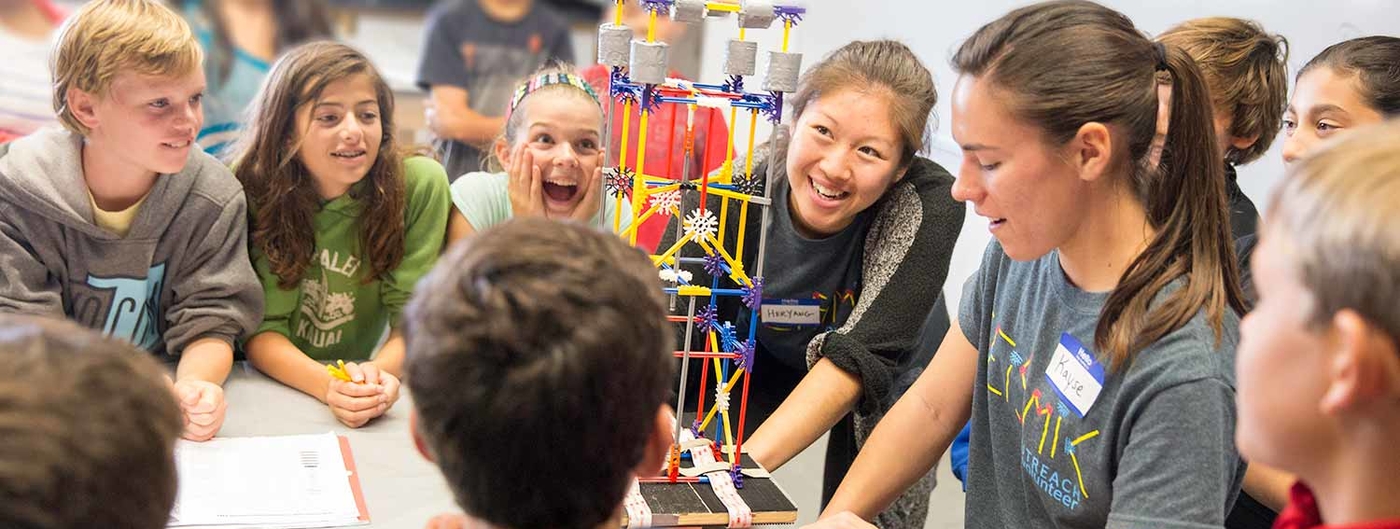What it is
Cross-age teaching is a delivery method that trains teens to teach younger peers. Peer pressure and bullying, healthy living, substance use and abuse and character development are popular cross-age teaching subjects because they’re relevant to both age groups.
Why it matters
- Younger youth look up to teen-teachers. Youth often learn more effectively from older peers, so when stakes are high (using drugs or bullying, for example), teens may have a greater impact on their younger peer’s behavior than adults.
- Teen-teachers are learning, too. Teens are viewed as the expert by their younger peers, but they’re absorbing the information they teach at the same time. This is great when tackling sensitive or risky-behavior topics.
- Teen-teachers gain transferable skills. Teaching offers great experience that can translate to future career opportunities.
Cross-age teaching has social and emotional benefits
- Teen-teachers become more confident and competent in their role from week to week.
- Teens and younger youth practice relationships skills, including communication and social engagement.
- The younger students are observing positive role-models in action.
What effective practice looks like
There are essential elements that differentiate cross-age teaching programs from other peer-to-peer experiences.
- Teen-teachers are responsible for delivery. Teen-teachers are not supporting or tutoring, but executing a learning experience on their own.
- Teens teach many times to the same youth. This is not a one-and-done experience; three or more meetings allow teens to refine their teaching and create genuine relationships with their students.
- Recruitment and selection makes a difference. Recruit teens who have an interest in teaching or working with children. Select teens who are at least three years older than the youth they will teach.
- Set your teen-teachers up for success. Use detailed, scripted lessons that teens can rely on until they get the hang of their role. Use lessons that are interactive and engaging for both the teen-teachers and their students.
- Train your teen-teachers. Have teen-teachers practice by teaching others how to deliver the lessons and activities.
- Incorporate teen voice. Let teen-teachers choose the activities they want to teach. Encourage your teen-teachers to share input and ideas based on their experience.
- Offer ongoing training, support, and reflection. Give clear, timely feedback. Reflect after each teaching session for goal-setting and improvement purposes.
Tips for program staff
- Strong youth/adult partnerships are key. Successful cross-age teaching programs have engaged professional youth workers who organize the offerings, build on the strengths of the teens, encourage goal setting, and provide space for teen-teachers to grow in their role.
- It’s all in the details. Share accurate and concise communication with all stakeholders. Teen-teachers need extra attention; your teen-led program cannot happen without them! Be prepared to go the extra mile to keep them engaged and prepared.
- Expand your reach. Utilizing teen-teachers multiplies an organization’s ability to reach students far beyond what staff alone can. Plus, building relationships between youth, teens, and partner agencies can have a remarkable impact in a community.
- Keep it simple. The teen-teachers are your largest resource! Use a curriculum that can be easily delivered with minimal materials, and these activities can be offered any time, anywhere (think out-of-school time programming, summer camps, and even online cross-age teaching experiences). The options are endless.
More from Extension
- Promoting positive youth development through teenagers-as-teachers programs. Journal of Adolescent Research
- Peer teaching as a strategy for conflict management and student re-engagement in schools. The Australian Association for Research in Education
- Adolescents as coaches during service-learning: teaching children social and emotional skills. Child and Youth Care Forum
- Lee, F. C., Lee, F. H., Murdock, S., & Paterson, C. A. (2002). Teenagers as Teachers: Twelve Essential Elements (Vol. 21613). University of California, Agriculture & Natural Resources.
- Teenagers as volunteer cross-age teachers in out-of-school programs: Introducing job readiness skills to middle school youth. The International Journal of Volunteer Administration
- Hauer, Angela, "Youth Teaching Youth Survey" Evaluation/Reflection
- Ribberger, C., Devitt, A., Gore, S. (2009). Training teenagers as food and fitness ambassadors for out-of-school programs. Journal of Extension
Reviewed in 2020


